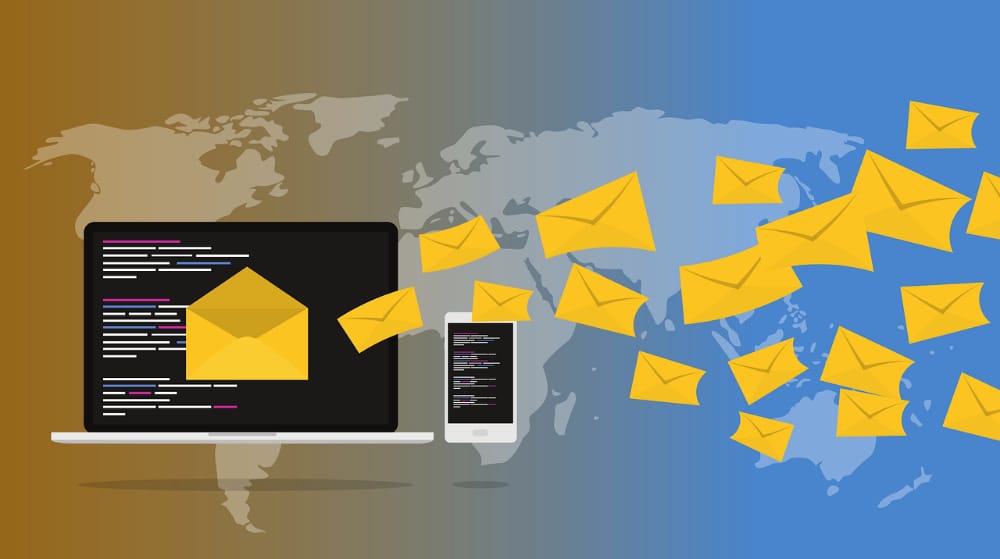Email Marketing Best Practices : Email marketing remains one of the most effective ways to build customer loyalty and encourage repeat purchases, but even the best email marketing strategies need to be tweaked from time to time in order to stay effective.
That’s why here are 10 simple email marketing best practices that can make a big difference in how successful your emails are.
Email Marketing Best Practices
Choose your templates wisely
To have a successful email marketing campaign, you must choose your templates wisely. A template is simply an email template with pre-written text. Email templates contain standard information such as sender and recipient name, topic line, and signature line.
Email Marketing Best Practices : They also include space for things like images and links to web pages. Choosing which email templates are right for your business depends on several factors:
how long you’ve been in business, who your audience is, what you do for a living or how large your company is – all of these factors will determine whether it makes sense for you to send HTML emails or text only emails.
Test your emails with real people
Everyone knows that email marketing can be effective, but sometimes it’s hard to tell whether your campaign is actually working. That’s where A/B testing comes in. With a bit of knowledge and a little effort, you can set up an A/B test for your email list—then pick out what’s been working (and what hasn’t) before making any permanent changes.
Email Marketing Best Practices : So how do you go about choosing your variables? And what are some other tips for creating better email campaigns? For more info on improving your emails, check out our post on 10 Tips for Writing Better Emails.
Personalize your subject lines
A recent study by Adestra revealed that click-through rates for personalized subject lines were 13 percent higher than for non-personalized ones. Personalization doesn’t just mean using a person’s name in your subject line—it also means tailoring your content so that it reflects their interests.
You can do both things at once by taking advantage of data collected on social media platforms like Twitter and Facebook. Most email marketing providers allow you to pull data from those sources, which can then be used to personalize emails even further—including in your subject lines.
Test different send times
Email Marketing Best Practices : When you send your email campaigns is just as important as what you’re sending. Send too early or too late and you risk ending up in your subscriber’s spam folder, which means that nobody will see your content.
The time of day makes a difference: Most people are far more likely to open an email in their inbox at night than during their morning commute.
Track your results on an ongoing basis
One of email marketing’s biggest benefits is that it enables you to track your results on an ongoing basis. Knowing whether your marketing efforts are paying off or not allows you to tweak them as needed and determine what types of emails resonate with your audience, so that you can send more like those.
Put up some systems to help track results, such as a pop-up asking for user feedback or a link at the bottom of each email directing users back to your website. Better yet, work directly with analytics tools like HubSpot’s inbound marketing platform—these will give you much more advanced tracking tools than Google Analytics.
Email Marketing Best Practices : The more advanced tracking data may seem overwhelming at first, but it will come in handy when trying out different tactics and optimizing over time.
Optimize your text formatting
An infographic is a great way to put your information into an easily digestible visual format, but you’ll want to make sure that it’s not cluttered or too dense. If there are lots of words on one page, they’ll be harder for people to read and comprehend.
Email Marketing Best Practices : Spacing out your text will make it easier for readers to follow along as they read through your infographic. You should also keep images and fonts consistent throughout each section of your infographic;
so if you use bold type in one box, make sure that same formatting is used throughout all other text boxes. That way, readers won’t get confused as they go from section to section. One final tip: don’t forget a clear call-to-action!
Add images (social proof!)
When it comes to email marketing, less is more. Emails with images see a much higher click-through rate than those without them (1.9% vs 1.2%). When you’re trying to improve your email marketing game, don’t forget about photos! Make sure you have a mix of photos and other graphics in your emails; choose contrasting colors that are easy on your subscribers’ eyes.
Involve influencers in each campaign
One of the best ways to improve your email marketing is to involve influencers in each campaign. Using influencers like an industry celebrity, entrepreneur or popular blogger will help you reach a wider audience and they’ll be more likely to share with their own followers.
For example, when Lululemon used Sarah Robb O’Hagan as a guest editor for their email newsletter, it sparked 1,500 shares within days because she was sharing tips that could help inspire a new generation of yogis.
People want advice from others who are similar to them and using an influencer helps take your campaign from average emails into something that inspires people.
Keep it simple!
As you’re strategizing for your email marketing campaign, remember that less is more. You want to send emails at times when people will be most likely to see them (e.g., around lunch and dinner). Simple, personal messaging goes a long way toward driving action.
Offer an incentive in exchange for an action (e.g., Download our free whitepaper now), but be careful not to overly clutter your emails or send too many—the more emails you send, and the longer they are, means lower engagement rates.
If you don’t have a large budget or staff, consider outsourcing your email marketing efforts; there are lots of companies out there with great expertise in getting results through effective messaging.
Ask yourself what will get them?
If you want your emails to get read and for people to take action based on what you send, start by asking yourself a few questions: Why am I sending an email? What do I want them to do as a result of reading it? Who is my target audience, and how are they different from my other subscribers?
How can I offer something in exchange for their name (even if it’s just information or insights that they find valuable)? If your answer is simply I’m trying to build a relationship with them, then there might be something wrong with your strategy.
As hard as it may be at first, it’s important not only to determine who will receive an email but also why you’re sending one.




